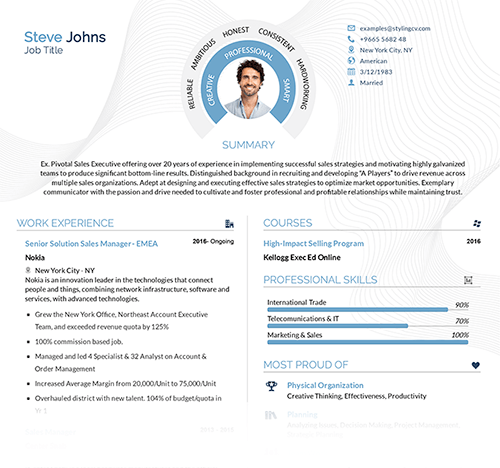
How Do I Explain a Difficult Situation on My Resume? Career Gaps, Firings & Transparent Tips Introduction: Owning Your Story Explaining a difficult situation on your resume—like a career gap or being…
Resume Help - How Do I Explain a Difficult Situation on My Resume? Career Gaps, Firings & Transparent Tips
Get your free resume nowHow Do I Explain a Difficult Situation on My Resume? Career Gaps, Firings & Transparent Tips
How Do I Explain a Difficult Situation on My Resume? Career Gaps, Firings & Transparent Tips Introduction: Owning Your Story Explaining a difficult situation on your resume—like a career gap or being fired—can feel intimidating. But honesty paired with strategic framing turns potential red flags into opportunities to showcase resilience. Employers appreciate transparency when it’s…
Sarah Reynolds
Content Specialist

How Do I Explain a Difficult Situation on My Resume? Career Gaps, Firings & Transparent Tips
Introduction: Owning Your Story
Explaining a difficult situation on your resume—like a career gap or being fired—can feel intimidating. But honesty paired with strategic framing turns potential red flags into opportunities to showcase resilience. Employers appreciate transparency when it’s balanced with professionalism.
The key is to address these challenges without oversharing. Focus on what you learned and how you’ve grown. For example, a career gap spent caregiving or upskilling can highlight adaptability. A termination can become a story about aligning values or improving goals.
Key Features of a Strong Resume Addressing Difficult Situations
- Transparency: Avoid vague dates or omissions that raise questions.
- Growth Focus: Turn challenges into lessons (e.g., “Enhanced conflict-resolution skills after navigating a team restructuring”).
- Relevance: Tailor explanations to connect with the job’s requirements.
- Confidence: Use active language (“Led,” “Achieved”) to shift focus to capabilities.
Best Resume Templates for Explaining Difficult Situations
- Classic Professional: Clean lines with a dedicated “Career Transition” section for context.
- Modern Minimalist: Uses white space to draw attention to skills over timeline gaps.
- Chronological Hybrid: Combines work history with a “Key Achievements” column to redirect focus.
Customizing Your Resume Template: Pro Tips
- Use Bullets Sparingly: Summarize employment gaps in 1-2 lines (e.g., “2020–2021: Full-time parent + freelance UX design coursework”).
- Shift Date Formats: List years instead of months if gaps are shorter than 12 months.
- Add Skills Sections: Highlight certifications or volunteer work done during breaks.
- Lead With Strengths: Place recent roles or skill headers above employment history if gaps are older.
Common Questions About Explaining Difficult Situations on Resumes
1. Should I mention being fired in my resume?
A: No—save details for interviews. Use phrases like “Contract concluded after project completion” if directly asked.
2. How do I explain a 2-year career gap without lying?
A: Frame it as a “Professional Development Break” and list courses, freelance gigs, or caregiving responsibilities briefly.
3. What’s the best resume format for frequent job changes?
A: A functional or hybrid template emphasizes skills over chronology.
4. How do I address a short-term job I left voluntarily?
A: Write “Contributed to [specific project]” without listing dates if under 6 months.
5. Can I explain a gap in my cover letter instead?
A: Yes—use 1–2 sentences linking the gap’s lessons to the role (e.g., “My sabbatical reinforced my passion for mentorship”).
Conclusion: Your Resume Isn’t Just History—It’s Strategy
A well-designed resume turns tough questions into trust-building moments. Templates from platforms like Styling CV offer layouts that minimize distractions while emphasizing your strengths. Explore options tailored to your industry—whether you need space for career breaks or sleek ways to spotlight growth after setbacks.
The right template doesn’t hide your story—it helps you tell it confidently.
Ready to reframe your resume? Browse [high-quality resume templates] designed for real-life career twists.
Related articles
Tags
Build your resume in 10 minutes
Use professional field-tested resume templates that follow the exact ‘resume rules’ employers look for. Create My Resume
BUILD MY RESUME NOW

